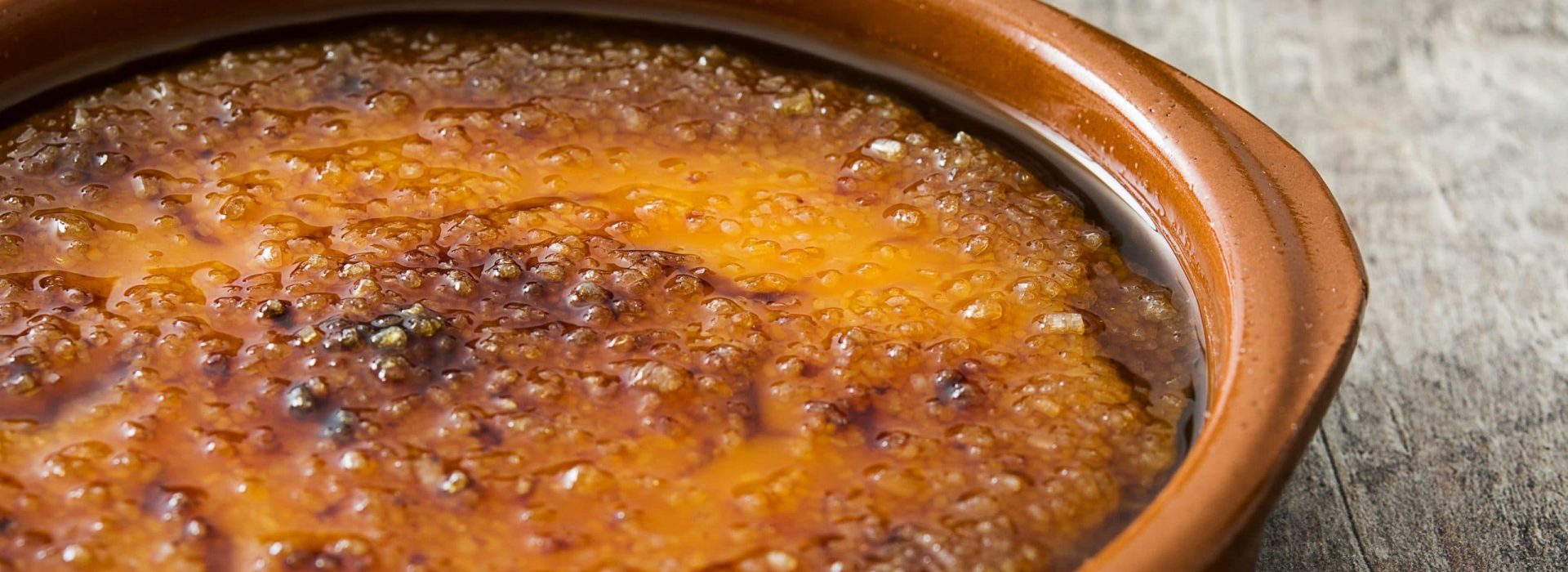The Evolution of the Crema Catalana
The most famous Catalan dessert has to be Crema Catalana. People have mentioned it in recipe books as far back as the 14th century. If you’re not sure what it is exactly, it’s a custard cream served in a dish that has sugar sprinkled on top. Right before it’s served, heat is used to melt that sugar to create a crunchy, burnt crust. Sound familiar? It should. We’ve just described the French dessert, crème brûlée.
The Difference Between Crema Catalana and Crème Brûlée
But according to the books, crème brûlée took another three centuries to hit the French dining tables. In that time, the only differentiating qualities were the Catalan’s use of milk, cinnamon, and lemon zest. This was in opposition to France’s use of cream and vanilla. Everything else remained the same.
Let’s jump ahead to the 1700s. François Massialot, chef de cuisine to many notable heads, mentions yet another dessert that fits the Catalan brief. This time it takes the form of crême à l’Angloise, or English cream. The trend doesn’t stop there, though. It seems everyone wants to somehow claim the dessert and rename it. Even Cambridge’s Trinity College in the late 1800s began serving their own Trinity cream, or Cambridge burnt cream. Their quirky twist involved adding a stamp of the college crest atop the sugar with the help of a tiny branding iron!
Another Crema Catalana revival occurred as recently as the 1980s. This was when crème brûlée made its appearance in cookbooks and restaurants left, right and centre. It was “a symbol of that decade’s self-indulgence and the darling of the restaurant boom.”
Crema Catalana Remains an Unchanged Classic
Why then, after so many years and so many kilometers, have we seen the Crema Catalina barely change between the version of crème brûlée and the version of Trinity crème still floating around today? Well, if it ain’t broke, don’t fix it! It was a winning recipe back in Northern Spain circa 1400s, and it’s a winning recipe now. And, yes, we’re sure to find modern takes of the Crema, like coffee, chocolate, even green tea, or lavendar crème brûlées because we love combining the old and new, but there’s no danger of losing the desserts’ solid foundations. You say Crema Catalina or crème brûlée and a person can’t help craving this original.
After tasting a Crema Catalana, it makes you wonder what other Catalan desserts we might be missing out on.





